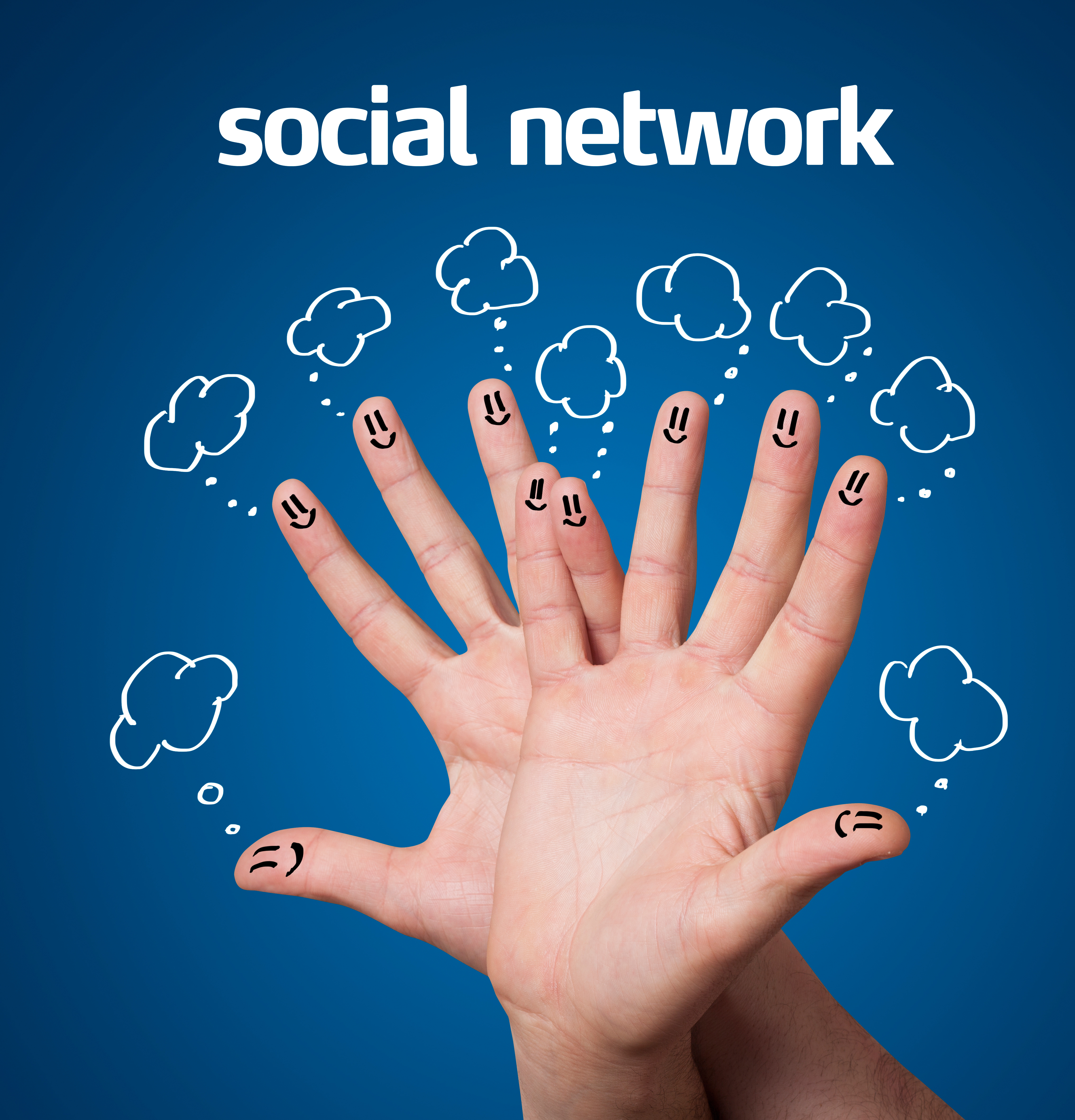
How can ITPs better prepare sign language interpreters to work in mainstreamed K-12 settings? Specific steps are proposed to help educational interpreters become advocates for their students – and for change.
K-12 interpreting* has been around for quite some time, at least since the precursor of today’s IDEA was passed in 1975. In the early years after this law was passed, we saw the development of what were called “self-contained classrooms,” where Deaf and Hard-of-Hearing (DHH) students attended a mainstream school, but congregated in special classes with a teacher of the deaf (TOD). As years and decades passed, the percentage of DHH students in self-contained classrooms slowly decreased and the percentage placed in regular classrooms for at least part of the school day increased.
It is no secret that professionals schooled in the overall needs of DHH children, including numerous sign language interpreting professionals, have felt that this trend has not been in the best interests of DHH children. Many such individuals learned about those overall needs in teacher training programs, from Deaf individuals themselves, and from CODAs. Much effort has been expended over the years to stem this tide, unsuccessfully.
Yes, concerned individuals, groups, and organizations have been working against the wholesale mainstreaming of DHH children for the last 4 decades. Yes, they have been researching, writing, publishing, presenting — attempting to educate the powers that be of the pitfalls in general education settings for DHH children. Gina Oliva and Linda Lytle’s book, Turning the Tide: Making Life Better for Deaf and Hard of Hearing School Children (published by Gallaudet University Press in February 2014), includes two chapters uniquely highlighting the efforts of these scholar-advocates. Sadly, despite the clamoring of knowledgeable and passionate individuals and groups, the push towards “full inclusion” of DHH children has continued. With each passing year we find more and more of these children in their neighborhood schools, separated from each other. And that is why this phenomenon has become an issue for the sign language interpreting community.
The Impact is Important
The increasing numbers of DHH children in general education settings has coincided with a related trend in how much experience educational interpreters have. Many, if not most, interpreters fresh out of their training find initial work in K-12 settings. Interpreters with limited training find work in these settings, also, though this fact may be slowly changing as a result of the development of the EIPA and its subsequent adoption in numerous states. The EIPA and the people behind it, both as an instrument and as a requirement, is but one example of the work of advocates for DHH children. At the same time, however, the fact that so many new interpreters work in K-12 settings is all the more reason for Interpreter Preparation Programs (IPPs) to develop more focus on preparing students for this kind of work.
Dr. Oliva’s February 2012 article, “Sign Language Interpreters in Mainstream Classrooms: Heartbroken and Gagged,” spoke to the issue of K-12 interpreters being actual eyewitnesses of the exclusion that results from “full inclusion.” Ironic, yes. Doug Bowen-Bailey, in “Ethical Choices: Educational Sign Language Interpreters as Change Agents,” says that “for interpreters working in schools, we clearly need to find new role space to lead to more success.” He offers several suggestions for how K-12 interpreters can find this new role space in their K-12 workplaces.
One way to address issues raised by Oliva, Bowen-Bailey, and others is for IPPs to solicit input from working K-12 interpreters and from DHH adults who have used interpreters in K-12 settings in recent years. Since things are changing so rapidly (economics, cochlear implants, to name a few influences), we suggest that this be done at least every 3-5 years. Oliva and Lytle’s book also reports what their research participants (in focus groups and an online survey) conveyed about their K-12 years. Not surprisingly, even without direct prompting, they had a lot to say about their interpreter(s).
Did these focus groups and survey participants, all between the ages of 18 and 34 in 2012, talk about their sign language interpreter’s interpreting skills? To a point, yes. In one glaring example, a then 9 year old’s interpreter was using the sign for a coin, a 25-cent piece, in conveying to the young deaf child that she could work on her assignment until “quarter to 12” (as in the time on a clock). Chaos ensued, admittedly. But significantly more frequent were remarks about the behavior, misbehavior, and overall cultural knowledge of the interpreters. As such, in the remainder of this article we describe four learning targets and associated projects that we suggest for IPPs. The topics are based on both the experience of Petri and her fellow working K-12 interpreters and on the reports from Oliva and Lytle’s research participants. These suggested projects should result in providing interpreting students with knowledge, options, and confidence to explore the “new role space,” as Bowen-Bailey suggests.
Where to Start
We recognize that IPPs may already be assigning projects similar to these. We also recognize that IPP coursework, particularly for K-12 interpreter specialization, necessarily follows any and all policy guidelines provided by the respective states to which they are responsible. We wish to set forth an opinion that, where such policy dictates for coursework do not reflect the real life experiences of working K-12 sign language interpreters and their now-grown consumers, IPPs have a responsibility to do whatever is needed to educate state-level personnel about this conundrum. Interpreters and interpreter trainers are uniquely positioned to educate everyone one concerned about the unique needs of DHH children. Dave Coyne’s recent Street Leverage article, “Social Justice: A New Model of Practice for Sign Language Interpreters,” certainly is aligned with the need for sign language interpreters to employ leadership tactics in partnership with DHH adults/professionals.
Everyone knows that something needs to change vis a vis the experience of DHH students in general K-12 educational settings. Maybe more than something: much needs to change. Let’s all take part and be the change – let’s share, collaborate, and grow a new role, turning the tide together.
Recommendations
Here are some specific recommendations for Interpreter Training Programs to consider adopting:
Learning Target 1
Understand Incidental Learning – how it informs and empowers all humans, how Deaf students in a hearing school are at risk for limited access to incidental learning, and a variety of ways interpreters can respond to this risk.
Instructor to lecture on the dissertation “Positioned as Bystanders: Deaf Students’ Experiences and Perceptions of Informal Learning Phenomena” (Hopper, M. 2012) – her methods, findings, and recommendations.
1. Students to consider where and how incidental learning has occurred in their own lives – through reflection and discussion on how they acquired language, knowledge, and insight by overhearing peers – slang, obscenities, vicarious learning.
2. Students to spend time in public spaces (coffee shops, bars, gyms, etc.) listening and (unobtrusively) taking notes on what is learned incidentally (e.g. overheard). Students to report on how what was overheard did or could inform their decisions or other elements of life, and on the potential impact of not overhearing particular bits of information.
3. Students to observe at the local school for the Deaf and report on how incidental learning naturally occurs in this environment.
4. Students to observe in a regular education setting with DHH student(s), list the incidental learning opportunities they witness (before class, in the hall, in the cafeteria), and make estimations about whether or not the information was accessible to and/or absorbed by the DHH student(s).
5. Students discuss the above observations and reports with classmates and develop ideas for strategies that sign language interpreters can employ to reduce the lack of access to incidental learning. Students should consider strategies aimed at all levels – hearing peers, the DHH student(s), teachers, administrators.
Learning Target 2
Have a solid understanding of the nebulous issues regarding the role of a sign language interpreter in general education settings.
1. Students to investigate and report on various sources for information on interpreting ethics in general education settings.
2. Students to interview working K-12 interpreters to learn about various situations that have challenged thinking about ethical behavior for interpreters in K-12 settings.
3. Students to prepare a report on situations where the interpreter’s role may be blurry and debatable. For each of these, students should report varying responses and the repercussions of each. Some examples might be:
a. Interpreters monitoring behavior or performing disciplinary actions: Give examples of why this is an issue, give numerous examples of situations where other adults might expect an interpreter to take some kind of action, and identify the options open to interpreters in each example.
b. Interpreters are bound by safety policies (“life, limb, or liability”) that apply to all adults in the school settings. Give examples of student actions that would clearly require interpreter intervention, student actions that would clearly not be bound by safety policies, and student actions that would fall into a gray area. Discuss various options for responding to the latter.
c. In matters of instruction, sign language interpreters have some flexibility. Students should come up with numerous situations that typically need to be decided case by case. Students should include extreme situations to illustrate flexibility within certain boundaries.
4. Teachers and other school personnel often expect and/or request an interpreter to assist with instruction. Students should give examples of requests for assistance from teachers/staff that they deem reasonable, unreasonable, and ambiguous.
Learning Target 3
Understand how DHH youth and adults feel about their experiences in general education classrooms.
1. Develop questions and interview DHH adults about sign language interpreting services during the K-12 years.
a. Which of their interpreters’ practices were/weren’t empowering?
b. What recommendations do they have for K-12 interpreters?
2. Develop questions and interview currently working K-12 interpreters and/or former working K-12 interpreters about interpreting services during the K-12 years.
a. In what ways did they empower and advocate for their students?
b. What insights do they have for you?
3. Discuss findings with classmates.
a. What were common problems/issues cited by the Deaf adults/Interpreters?
b. What solutions were commonly deemed effective?
c. What recommendations do they have for currently working K-12 interpreters and for IPPs?
4. Use this information to develop fact sheets for general education settings – develop one fact sheet for adult staff, and one for hearing classmates.
Learning Target 4
Be able to function as an effective advocate for DHH students in general education settings – learn how to establish oneself as an approachable, trustworthy, and knowledgeable ‘local expert’ on issues related to DHH students.
1. Students to compose a one-page letter introducing him/herself and explaining the sign language interpreter’s role. Include a brief description of the interpreting process, your training and experience, and what services you provide.
2. Students to prepare an in-depth inservice presentation for general education staff members.
3. Provide a practice inservice session by doing one of the following:
a. Do a ‘mock inservice’ with current educators in local school.
b. Present to a college class of future K-12 educators.
In the end
We have offered some specific student learning objectives and associated assignments or projects that will provide interpreters-in-training an opportunity to learn about and discuss issues regarding interpreting in K-12 settings. This is particularly important because so many newly-trained interpreters find themselves working in such settings for at least a few years. We further emphasize the responsibility that IPPs have for considering the impact of the “end product” of their programs, which is the education of deaf and hard of hearing children, for better or for worse. In particular, they must be involved in educating state-level officials about the kind of training these children deserve their interpreters to have.
Do you have Learning Target that you might suggest?
Co-Author – Jenee Petri
Jenee worked as a K-12 Interpreter for 10 years. She is currently a staff interpreter at the University of Minnesota. In addition to freelance work, she has been a Video Interpreter at Sorenson Communications for 5 years. Jenee has been nationally certified since 2003. She is also a national certified Cued Language Transliterator. Growing up in Faribault, Minn., Jenee studied ASL in high school, which lead her to pursue a degree from Saint Paul College’s Interpreter Training Program in 2001. She currently lives in Minneapolis with her boyfriend, Steve, and their dog, a 9 y/o English Springer Spaniel, Henry.
*We use the term “K-12 interpreting” for the sake of precision. Issues involved with interpreting for K-12 students differ from those involving college students and adults. We think that the term K-12 interpreting allows us (and other writers) to be more precise.





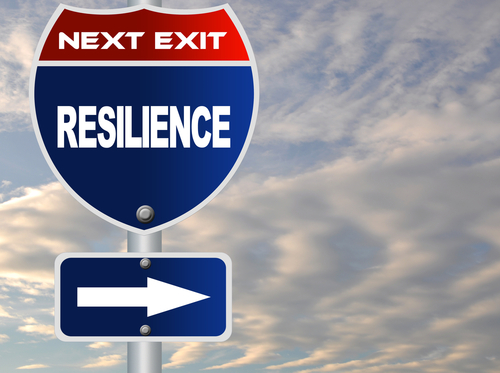
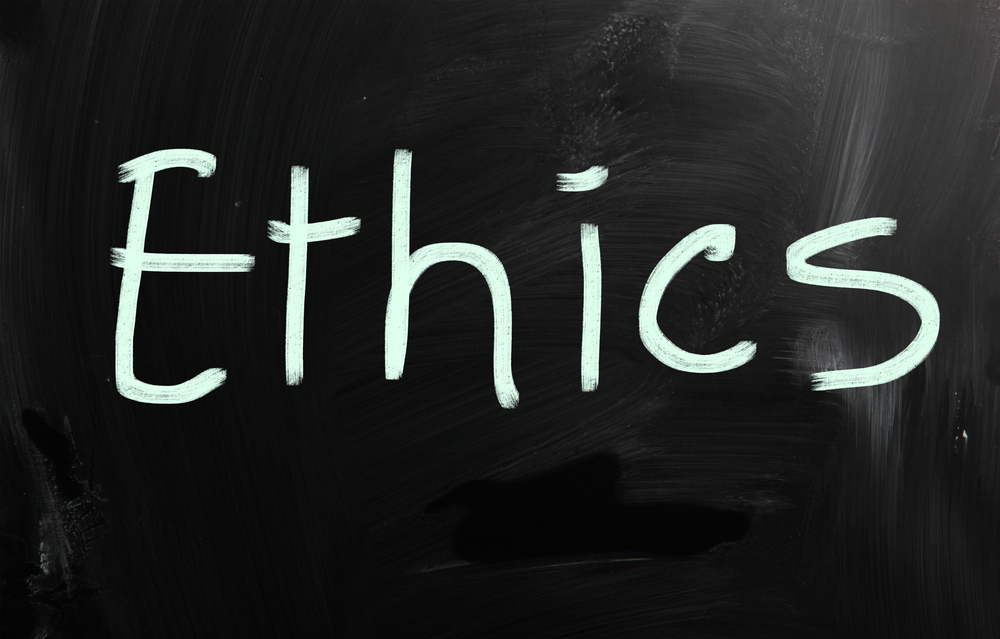
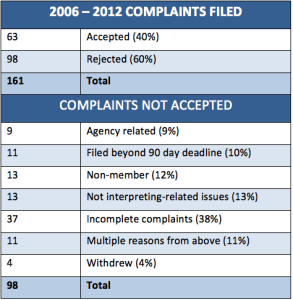 As part of the commitment to the EPS program, the EPS staff has begun compiling data to help facilitate informed dialogue. The data compiled here reflects the years following the adoption of the CPC in 2005.
As part of the commitment to the EPS program, the EPS staff has begun compiling data to help facilitate informed dialogue. The data compiled here reflects the years following the adoption of the CPC in 2005.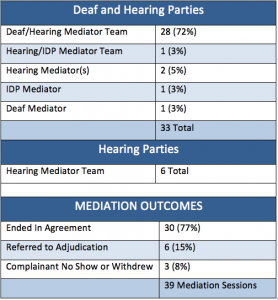 RID utilizes a grievance system that includes a punitive component and also encourages communication, mediation, the resolution of conflict with a rebuilding of trust and confidence. This process is designed to be both corrective and educational in nature.
RID utilizes a grievance system that includes a punitive component and also encourages communication, mediation, the resolution of conflict with a rebuilding of trust and confidence. This process is designed to be both corrective and educational in nature.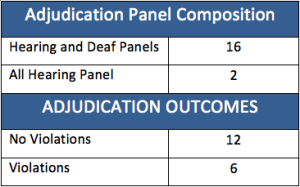 To date, there has been no formal study on the correlation between failed mediations and violations at adjudication. This may be a necessary step to assess the effectiveness of the program, examining whether the adjudication phase lacks rigor. Another possibility is that those cases that do not end in mutual agreement at mediation might be where the parties remain at odds and the interpreter is confident that his/her actions were in compliance with the CPC.People have asked why so few violations are published in VIEWS. Most cases do not go beyond mediation because both parties voluntarily agree to and embrace their resolution to the situation. While some might prefer to see more sign language interpreters brought before a jury of peers, the philosophy behind the RID mediation program has always been that the parties should be actively engaged in the EPS process, which often starts with mediation.
To date, there has been no formal study on the correlation between failed mediations and violations at adjudication. This may be a necessary step to assess the effectiveness of the program, examining whether the adjudication phase lacks rigor. Another possibility is that those cases that do not end in mutual agreement at mediation might be where the parties remain at odds and the interpreter is confident that his/her actions were in compliance with the CPC.People have asked why so few violations are published in VIEWS. Most cases do not go beyond mediation because both parties voluntarily agree to and embrace their resolution to the situation. While some might prefer to see more sign language interpreters brought before a jury of peers, the philosophy behind the RID mediation program has always been that the parties should be actively engaged in the EPS process, which often starts with mediation.